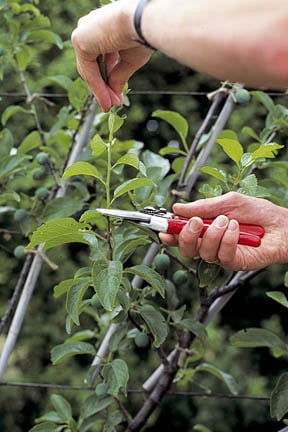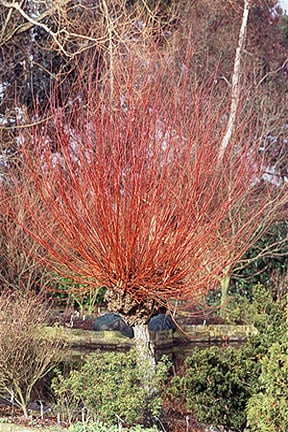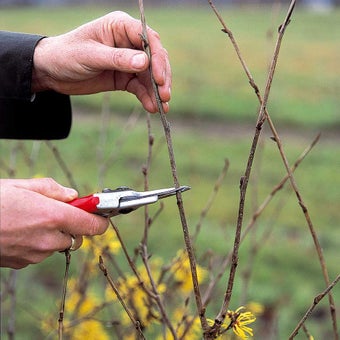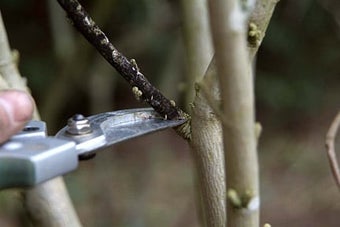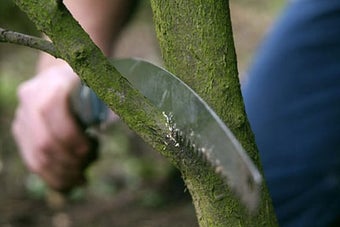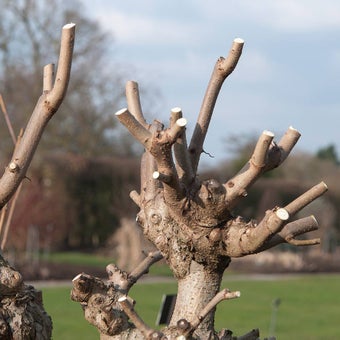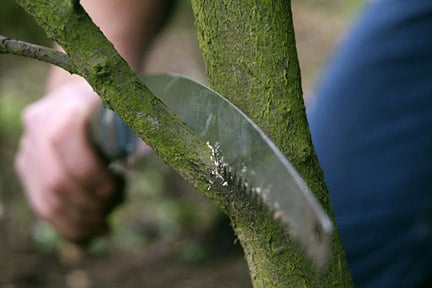
Quick facts
The size, shape and vigour of a tree can be influenced by pruning
It is important to consider the tree's natural habit and work with it
Pruning can help to control pest and disease problems
Getting started
There are numerous reasons for pruning a tree. It is good to know what type of tree you have and to have a clear idea of what you want to achieve by pruning. Try to identify your tree and research the most suitable time to prune. RHS members can use MyRHS to send us some photos for identification and to request pruning advice. This page provides a step-by-step guide to tree pruning, followed by responses to frequently asked questions on tree pruning.
What you'll need to prune a tree:
- Pruning saw
- Secateurs
- Loppers
- Long-handled pruning saw (large trees)
- Ladder (large trees)
- Gloves
- Safety googles
- Head protection (large trees)
Top Tip
When pruning out diseased wood, clean your pruning tools with disinfectant between cuts.
How to prune a tree in ten simple steps
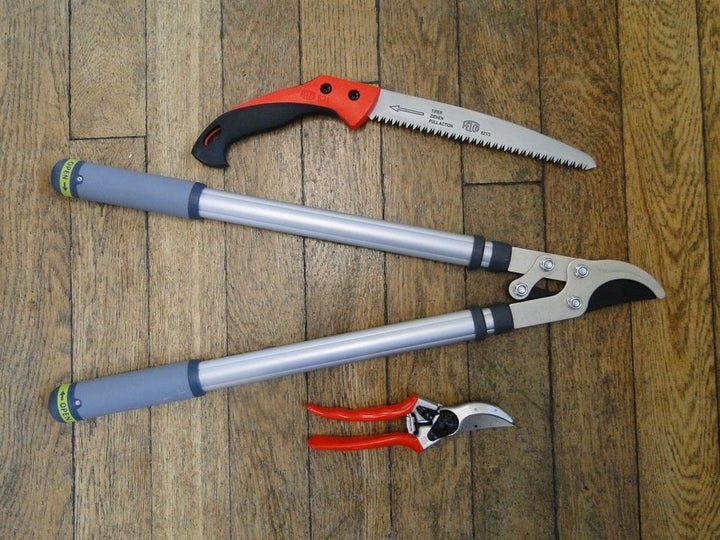
- Ensure you have suitable tools Make sure blades are sharp, as this makes pruning easier. Sharp tools also create clean cuts, improving the chances of them healing well.
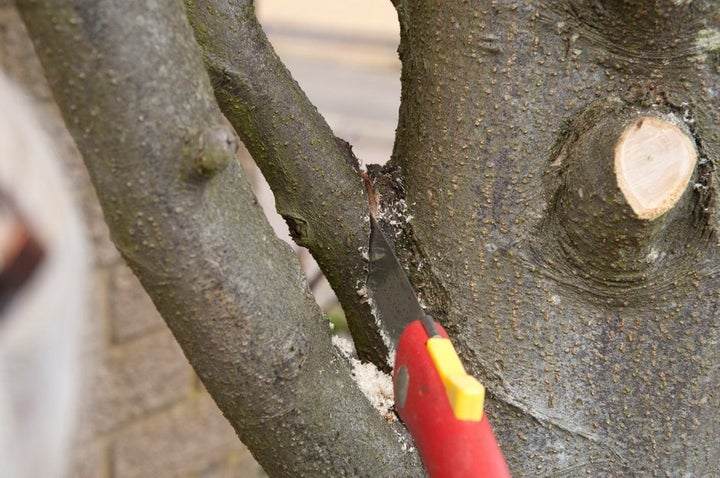
- Consider what you want to achieve by pruning If your tree is casting too much shade, thin out its branches. If it is taking up too much space, consider removing some lower branches (crown lifting) to create space under the canopy for plants or people. Tree shaping, done well, can enhance the natural features of a tree.
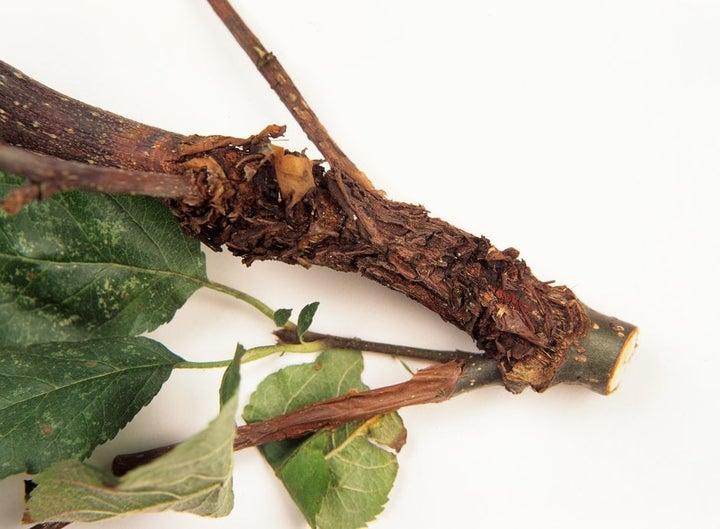
- Remove the three D's Start by removing dead, diseased and damaged branches, followed by weak or lax growth. Remove branches rubbing together, as this could create an entry point for disease.
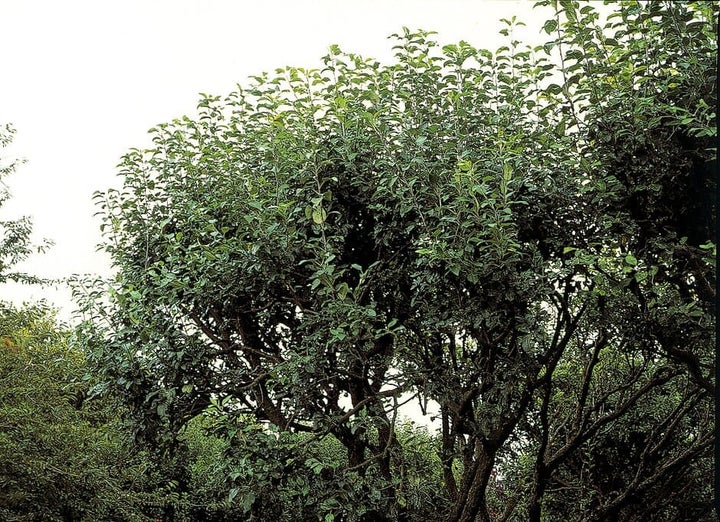
- Assess the tree from different angles Identify what else you want to remove. Avoid removing more than one fifth of the canopy in any one year. Hard pruning can encourage lots of vigorous upright growth known as watershoots, so can be counterproductive if you are aiming to reduce the size or thin the canopy of your tree.

- Prepare to remove larger branches Use an undercut and an overcut to prevent tearing. Firstly, make a shallow cut into the underside of the branch about 20cm (8in) out from where your final cut will be. Secondly, make a shallow cut into the topside of the branch about 2.5cm (1in) further along (towards the branch tip).
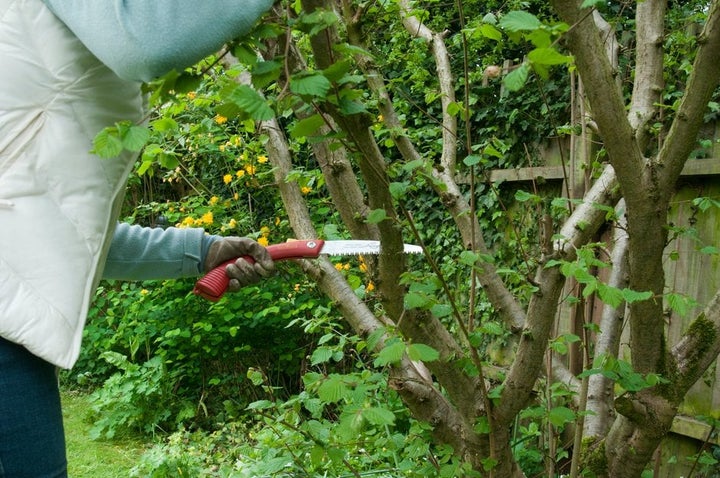
- Remove larger branches Saw through to join your undercut and overcut and remove this section of branch. Long, heavy branches may require more cuts, removing multiple sections, to make the task safe and manageable.
- Remove pruning stubs After a large branch has been sawn off, remove the stub by sawing through it just outside the branch collar (the slight swelling, sometimes wrinkled, where the branch joins the trunk or a thicker branch). Hold the stub while sawing, to take its weight and avoid tearing. Don't cut flush to the trunk because the collar is the tree’s natural protective zone where healing takes place.

- Prune thin branches Prune branches less than 2.5cm (1in) in diameter, with secateurs or loppers, cutting 0.5cm (¼in) above a healthy bud, pair of buds or side shoot. Avoid cutting too close to the bud, as this can cause it to die, or too far from the bud, as this can result in dieback of the stub, which could spread into healthy wood. Where possible, cut to an outward-facing bud or branch to encourage a well-shaped canopy.
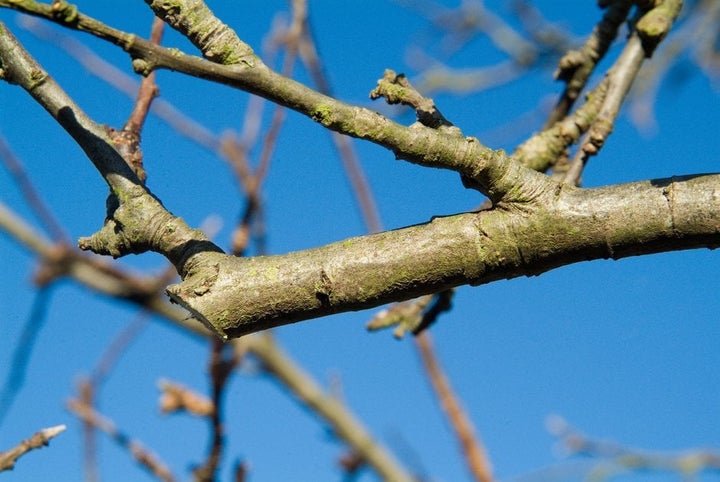
- Thin out thicker branches When branches thicker than 2.5cm (1in) in diameter need pruning, it’s best to remove them completely rather than leave a stub. Prune back to the main trunk, a thicker branch or to a side shoot at least one-third the diameter of the branch you are removing.
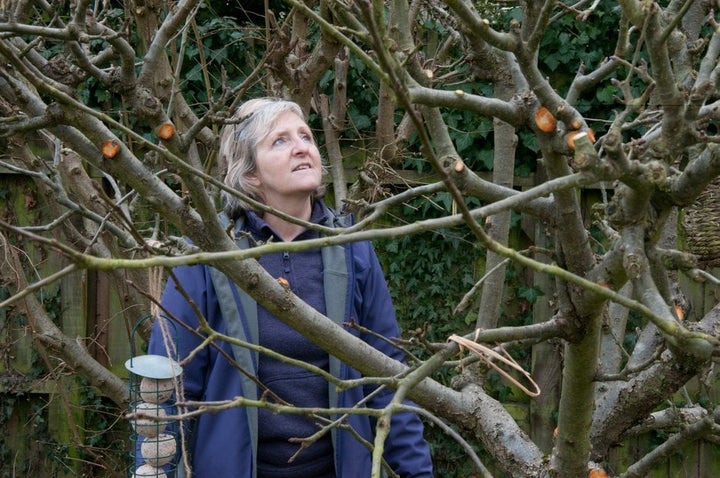
- Stand back to reassess the tree Look at the tree from all sides to check you haven’t missed any branches that need pruning. Repeat the above steps until you are happy with the result.
Tree pruning - frequently asked questions
When should I prune my tree?
This depends on the type of tree, but there are some general guidelines to follow. Diseased or damaged wood can be removed when first noticed, to prevent the problem spreading into healthy wood.
Deciduous trees
Many deciduous trees are pruned in winter when they’re dormant, although there are some exceptions:
- The sap in birch and Japanese maples starts rising early in the year, so these are best pruned in autumn or early winter to avoid heavy bleeding from pruning cuts
- Prune deciduous magnolias and walnut trees between mid-summer and early autumn, to avoid excessive bleeding and allow pruning cuts to heal well
- Cherry and plum trees, which are prone to a fungal disease called silver leaf, are best pruned from April to July when fungal spores aren’t being carried on the wind, and the tree sap is rising rather than falling (which pushes out infection rather than drawing it in)
Evergreen trees
April to late August is suitable for pruning many conifers. Most conifers will not regrow from old, bare wood (yew is an exception), so lightly trim or remove new growth tips to control size. Before a conifer becomes too tall, prune the top off the main vertical trunk to slow further upward growth.
Numerous non-coniferous evergreen trees, such as holly, bay, strawberry tree and mimosa, are best pruned in spring.
Should I prune a young tree?
Carrying out formative pruning on a young tree (between one and five years old) is useful for determining its future shape and structure. One aim at this early stage is to create a framework of well-spaced branches. Other aims will depend on the tree you are growing, its situation and uses.
It's often desirable for ornamental trees planted in a formal setting to have a central-leader (one leading upright branch in the centre of the tree), so formative pruning will consist of removing competing upright branches. However, in some situations gardeners might choose to remove the central-leader, as this can slow upward growth and limit the eventual height of a tree.
Am I allowed to prune my tree?
Prior to undertaking any work, it is essential to ascertain if a Tree Preservation Order (TPO) is in place or if the tree is in a Conservation Area. For more information, see our guide to Tree Preservation Orders.
For detailed information about trees on or near boundaries, see our guide to Trees and the law.
It is an offence, under The Wildlife and Countryside Act 1981, to damage or destroy the nest of any wild bird, while it is in use or being built; bat roosts are also protected. Make sure to check trees for active nests before starting to prune, delaying until after the nesting season (typically early March to the end of July) if necessary.
Should I paint the pruning cut?
There is no need to use wound paints, as they are unlikely to contribute to healing or prevent disease. The exception is plums and cherries, where wound paint may be used to exclude the spores of silver leaf disease.
What should I do if sap flows from the cut?
If pruning cuts bleed sap, don’t bandage or bind the cut, as attempts to stop the bleeding are likely to be unsuccessful and may impede rather than aid healing. If lots of sap is lost from pruning cuts the overall health and vigour of the tree may suffer, and it may need additional care (mulching and watering) to recover well. For more information, see our page on bleeding from pruning cuts.
What should I do if a large tree needs pruning?
Safety is of prime importance when working with trees, so make an honest appraisal of your capabilities. If in any doubt, engage a professionally qualified tree surgeon or aboriculturist. The Arboricultural Association has a directory of approved contractors and consultants.






